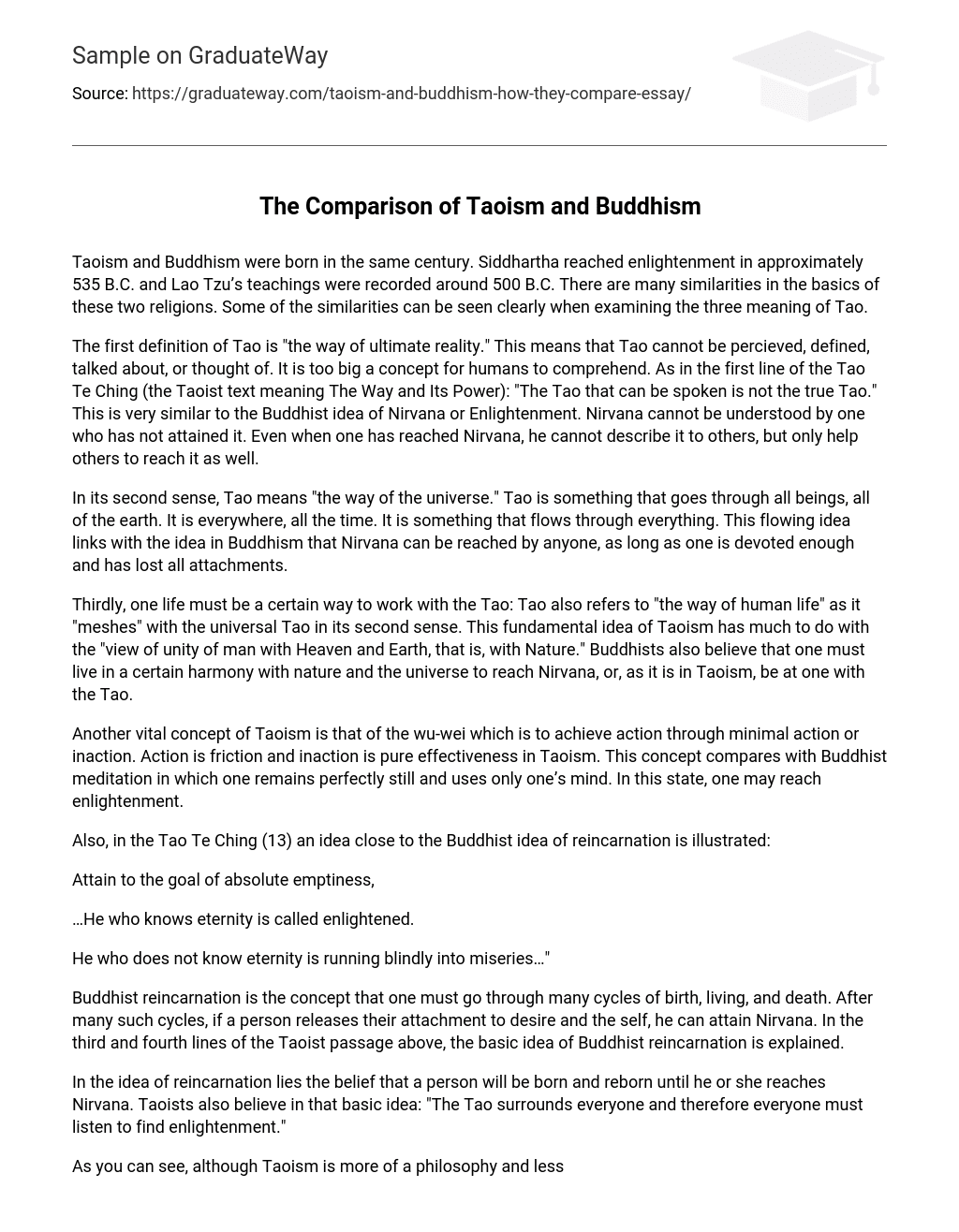Taoism and Buddhism both originated around the same period of time. Siddhartha attained enlightenment approximately in 535 B.C., whereas Lao Tzu’s teachings were recorded roughly in 500 B.C. These two religions have resemblances, particularly in their comprehension of the Tao concept. To fully comprehend its significance, it is crucial to examine its three interpretations.
The initial definition of Tao is “the way of ultimate reality.” This implies that Tao is beyond perception, definition, discourse, or conception. It surpasses human comprehension due to its magnitude. Just like the opening line in the Tao Te Ching (a Taoist scripture indicating The Way and Its Power): “The Tao that can be spoken is not the true Tao.” This concept shares similarities with the Buddhist notion of Nirvana or Enlightenment. Nirvana eludes comprehension by those who have not attained it. Even an individual who has achieved Nirvana cannot articulate it to others, but can only guide others in attaining it as well.
Tao, in its second meaning, refers to “the way of the universe.” It is present in all beings and throughout the earth, omnipresent and eternal. It is the force that permeates everything. This concept of continuous flow aligns with Buddhism’s notion that Nirvana can be attained by anyone who possesses sufficient devotion and detaches from all worldly attachments.
Both Taoism and Buddhism place great importance on aligning one’s life with the natural order of things. For Taoists, this means recognizing the interconnectedness between humans and nature and striving for unity with the Tao. Similarly, Buddhists also emphasize living in harmony with nature and the universe as a path to attaining Nirvana. In both traditions, achieving this state of unity serves as a central objective.
Another crucial principle in Taoism is wu-wei, which involves achieving action through minimal or no action. In this philosophy, taking action creates resistance, while refraining from it is seen as highly efficacious. This idea can be compared to the practice of Buddhist meditation, where individuals aim to remain perfectly motionless and rely solely on their mental power. By attaining this state, one can potentially achieve enlightenment.
Additionally, the concept conveyed in the Tao Te Ching (13) closely resembles the Buddhist belief in reincarnation.
Strive for the ultimate state of complete emptiness,
Those who possess knowledge of eternity are referred to as enlightened individuals.
People who are ignorant about eternity often find themselves carelessly moving towards miseries…
The Taoist passage explains the core concept of Buddhist reincarnation, emphasizing the cyclical nature of birth, life, and death. The ultimate objective is to achieve Nirvana by letting go of desires and attachments to oneself.
The concepts of reincarnation and reaching Nirvana both stem from the belief that individuals undergo multiple births and deaths until they attain enlightenment. Taoists also embrace this belief, asserting that enlightenment can be found by listening to the Tao, which encompasses every individual.
Despite Taoism being more of a philosophy rather than a religion, it shares numerous similarities with Buddhism.





